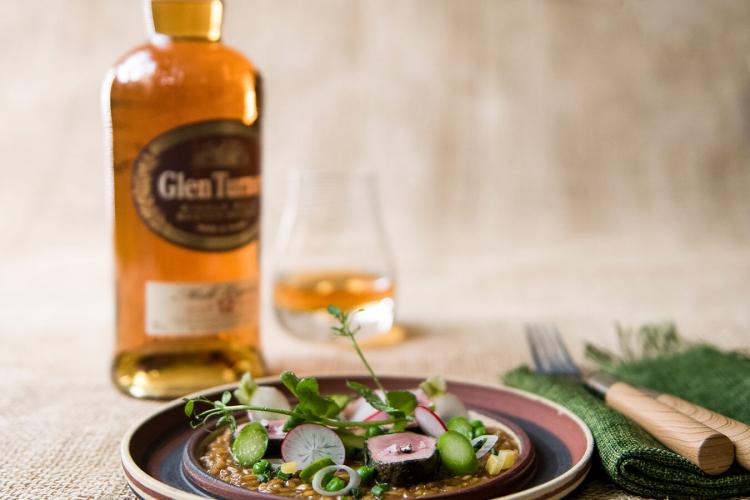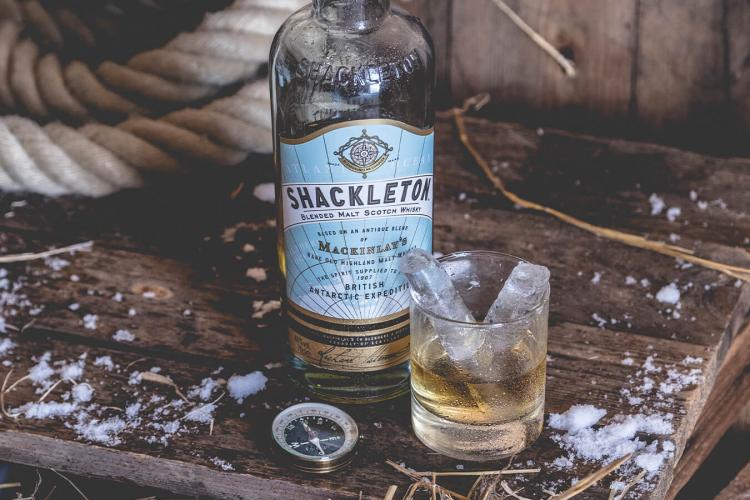Whisky is one of the timeless classics of the spirits world. Scotland has been producing excellent whiskies for hundreds of years and is today known for bringing the perfect mix of tradition and innovation.

Manufacture
As the name suggests, Scotch, arguably the most famous whisky in the world, is native to Scotland. The different types of whisk(e)y are primarily differentiated by their region of origin, notably Scotland (Scotch Whisky), Ireland (Irish Whiskey), and the United States (e.g. Bourbon Whiskey).
The original product is single malt whisky. Single means that the whisky was created in a single distillery; malt refers to the fact that it is made exclusively from malted barley. In Scotland, whisky is distilled twice, in Ireland, it is distilled three times.
Original whisky is made from barley. The barley goes through a process called mashing, a hot water steeping process which hydrates the barley, activates the malt enzymes, and converts the grain starches into fermentable sugars. After drying over smoke, the barley is milled and heated in a mash tun (large pot) together with fresh spring water to rinse out the sugar. The subsequent addition of yeast promotes alcohol production. The resulting fermented grain mash is then distilled twice (Scotland) or three times (Ireland) and filled into barrels to age for several years.
A further distinction is made with ‘blends’: Instead of coming from a single distillery, blended whiskies are made using a blend of distillates from more than one distillery.
The aim of blends is to achieve a ‘house style’ that remains consistent over many years. Thus, ‘single malt whisky’ comes from a single distillery, but usually not from a single distillation process.
Whisky or Whiskey?
These are more than just alternative spellings. In fact, ‘whisky’ and ‘whiskey’ differ in taste, production, and origin. Whisky and whiskey have been distilled in Scotland and Ireland respectively for centuries. Today, no one can say for sure which country was the first to produce the spirit.
Until just before the beginning of the 20th century, the uniform spelling was ‘whisky’. It is widely believed that in around 1870, Ireland’s distillers, predominantly those based in Dublin, began to use the ‘e’ spelling as a way to differentiate their whiskeys from Scotch. They were becoming more popular and were regarded as being of higher, more consistent quality. Having a different spelling gave the Irish another way of helping foreign buyers in particular distinguish between the two styles. From that point on, therefore, Irish whisky was rebranded ‘Whiskey’. This proved a decisive move, in particular for exports to America, and the start of a big success story. In America, unlike Ireland and Scotland, barley is not the only grain used in the distillation process; rye, wheat, or maize can also be added.
Production differences are responsible for the differences in taste. Only Irish whiskey uses both malted and non-malted barley, for instance. In contrast to scotch, the barley malt is not dried over an open peat kiln, which gives the whisky its distinctive peaty smokiness; in Irish products, therefore, the natural barley flavor is more prominent. Because Irish whiskey is distilled three times, it has a higher alcohol content than scotch.
MICHTER´S
Michter’s story begins in 1753, when a farmer in the Blue Mountain Valley, Pennsylvania, distilled his first whiskey from rye. One day, a distiller left his family’s well-known distillery to join Michter in order to make the best whiskey. This great distillation tradition continues today in Kentucky. Whiskeys from Michter's Distillery are not released until the whiskey tasters consider them ready. This means that the whiskeys are often in fact older than the age stated on the label.

GLEN MORAY
Located in the heart of Speyside, the whisky capital of Scotland, the Glen Moray distillery has been producing fine single malt whisky since 1897. Craftsmanship and continuity are at the forefront of production. Glen Moray is the ideal introduction to the world of peated whiskies.

GLEN TURNER
These whiskies were made in the Glen Moray distillery. Glen Turner is considered an ideal introduction to the world of single malts due to the outstanding quality guaranteed by the tireless work of the master distiller.
Its complexity and structure make it a real insider tip for connoisseurs.

TAMNAVULIN
The history of the Tamnavulin distillery, which is situated in the rural Scottish village of Tomnavoulin, dates back to 1966. Following a temporary closure and extensive renovation, it is known for distilling the best Speyside whiskey: rich and rounded, smooth and mild with a fresh character.

SHACKLETON
This whisky was created as an aromatic homage to the polar explorer Ernest Shackleton and his expedition whisky. The blended malt scotch whisky is a soft blend of the best Highland single malt scotch whiskies with notes of vanilla, dark chocolate and subtle smoke.

THE DEAD RABBIT
Straight out of the land of opportunity, this whisky is named after the most feared Irish street gang of 19th century New York, The Dead Rabbit. A blend of grain and malt, this whiskey is aged for five years at the Dublin Liberties distillery.
